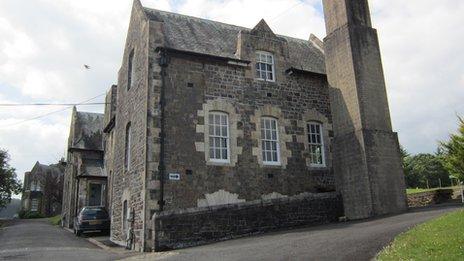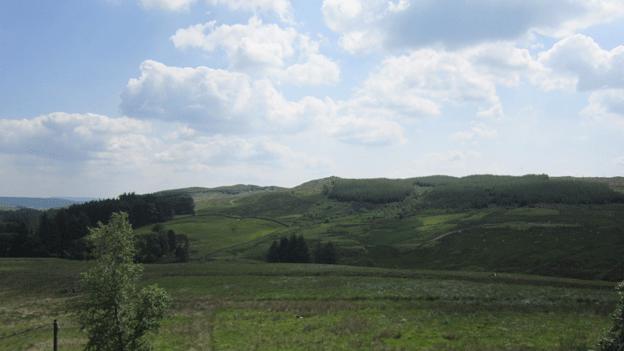Lewis Fry Richardson: The man who invented weather forecasting
- Published
Lewis Fry Richardson was appointed superintendent at Eskdalemuir Observatory on 1 August 1913
Technology took its time to catch up with Lewis Fry Richardson.
He needed six weeks to produce a weather forecast for the next six hours - and even then it was not very accurate.
And yet his mathematical methods, which became more practical with the advent of electronic computers after World War II, still see him credited as a key figure in the development of modern meteorology.
It was a journey that began in earnest on 1 August 1913 when the Newcastle-born scientist and mathematician took up the post of superintendent at the Eskdalemuir Observatory.
His arrival is being celebrated at the same site 100 years on with the erection of a plaque to mark the importance of his work.
"To meteorologists, he invented weather forecasting as we now know it," explains the present-day Met Office manager at Eskdalemuir Ian Dawson.
"We thought of ways in which we could commemorate it."
Richardson was put in charge of a very different operation to the one now seen at the Dumfries and Galloway site.
"He was superintendent, the man in overall charge," says Mr Dawson.
"This was at the time when there were 30 people working here rather than two."
However, he had no background in the developing field of weather forecasting.
"This is what struck me, he came straight here from university with no experience," says Mr Dawson.
"He was a mathematician - I can only think that somebody here or within the Met Office thought there might be a mathematical solution.
"It is accepted that he invented weather forecasting as we now know it, with computers - but he did not have the facilities to do anything about it."

The Eskdalemuir Observatory looks much as it did in Richardson's day
It is easy to see how Eskdalemuir was the perfect place for him to work on his theories.
Back then there would have been none of the thundering timber lorries you now meet on the road to the observatory, nor the eye-catching colours of the nearby Samye-Ling Tibetan centre.
The Met Office described it as "a very isolated and lonely location, perfect for study, research and contemplation".
It certainly suited Richardson who would reputedly hang his hat on the outside of his office door to indicate he did not wish to be disturbed.
It allowed him to bring his "theoretical approach" to the field and nowadays Eskdalemuir can claim to be the "birthplace of weather forecasting as we now know it".
Not that it was a straightforward process.
A devout Quaker and committed pacifist, Richardson declared himself a conscientious objector during World War I and ended up joining an ambulance unit between 1916 and 1919.

The remote location was considered to be ideally suited to Richardson's studies
Nonetheless, he continued to develop his theories before rejoining the Met Office in 1920 but he soon resigned on religious grounds when it became part of the Air Ministry.
It was in 1922 that he published Weather Prediction by Numerical Process.
He reckoned it would need 60,000 people working with slide rules to predict tomorrow's weather before it arrived.
Computers would eventually do the job and he would live just long enough to see their first efforts in the early 1950s.
As well as his work with weather, Richardson's dislike for war prompted him to study its causes and publish works including Statistics of Deadly Quarrels.
However, an interest in meteorology clearly stayed with him all his days.
He retired to Kilmun, on the banks of Holy Loch, and some older residents can still recall his time there.
He was often to be seen dropping parsnips off the village pier to study how the currents moved them in the way he thought the atmosphere would work.
He died at home in September 1953, the year before the first weather forecaster appeared on BBC television.
Nowadays, they have become household figures, feeding a national obsession with knowing what conditions will face us when we step outside the front door.
So we all owe a little debt of gratitude to the man being honoured in southern Scotland and the work he started a century ago.
- Published19 June 2013
- Published10 June 2013
- Published11 March 2013
- Published6 June 2012